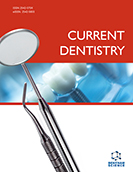
Full text loading...
We use cookies to track usage and preferences.I Understand
Background: The use of zirconia-based ceramics to produce monolithic restorations has increased due to improvements in the optical properties of the materials. Traditionally, zirconia-based ceramics were veneered with porcelain or glass-ceramic and were not directly exposed to the oral environment. Therefore, there are several doubts regarding the wear of the monolithic zirconia restoration and their antagonists. Additionally, different surface treatments are recommended to promote a smooth surface, including glaze and several polishing protocols. To support the correct clinical application, it is important to understand the advantages and limitations of each surface treatment.
Objective: The aim of this short literature review is to investigate the factors that may affect the wear of monolithic zirconia restorations in service and their antagonists.
Methods: Pubmed/Medline database was accessed to review the literature from a 10-year period using the keywords: zirconia, monolithic, prosthesis, wear. Both clinical and in vitro studies were included in the review.
Results: Studies investigated the effect of several surface treatments, including grinding with diamond-burs, polishing and glazing, on the surface roughness, phase transformation and wear capacity of monolithic zirconia. The wear behavior of monolithic zirconia was frequently compared to the wear behavior of other ceramics, such as feldspathic porcelain, lithium disilicate-based glass-ceramic and leucite-reinforced glass-ceramic. Human tooth, ceramics and resin composites were used as antagonist in the investigations. Only short-term clinical studies are available (up to 2 years).
Conclusion: Literature findings suggest that zirconia monolithic restorations are wear resistant and unlikely to cause excessive wear to the antagonist, especially when compared to feldspathic porcelain and glass-ceramics. Monolithic zirconia should be polished rather than glazed. Yet, none of the polishing systems studied was able to completely restore the initial surface conditions of zirconia after being adjusted with burs. More clinical evidence of the antagonist tooth wear potential of monolithic zirconia is needed.

Article metrics loading...

Full text loading...
References


